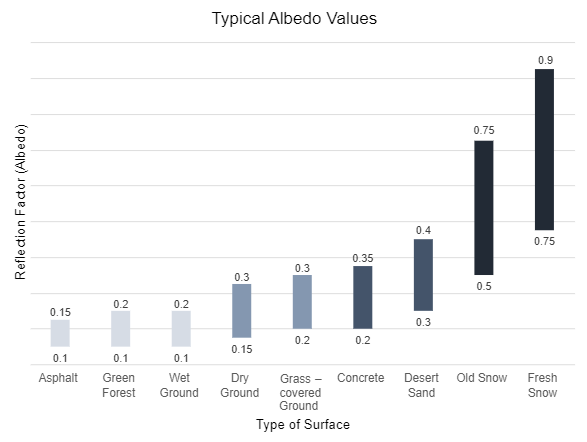Bifacial Gains for Fixed Tilt Systems
Bifacial Gains for Fixed Tilt Systems
Bifacial panels are equipped with solar cells on both sides, allowing them to capture sunlight from the front and rear surfaces simultaneously. This innovative design has gained popularity due to recent advancements in manufacturing processes, making them a strong competitor to their monofacial counterparts.
To measure the performance of bifacial solar panels, two key metrics are used: Bifaciality factor and bifacial gain. Bifaciality factor represents the ratio of energy output from the back side of a bifacial panel to the energy output from the front side. On the other hand, bifacial gain measures the percentage increase in energy output of a bifacial panel compared to a Monofacial panel under the same conditions. It demonstrates the panel’s ability to capture and convert light from both sides.

For fixed tilt system projects located in India, the current bifacial gain typically ranges from 3% to 10%. Achieving this gain relies on three fundamental parameters. The most significant parameter is the amount of irradiance received on the rear side and is dependent on the parameters illustrated in the figure above. Furthermore, this in-turn has an impact on area utilized, tonnage of module mounting structures (MMS) and cabling; therefore, it is the skill of the designer to optimize the configuration based on trade-off occurring between the energy gain and the overall impact on plant BOS. SgurrEnergy has the capability to optimize a bifacial based fixed tilt system such that this is realized in terms of least LCOE considering geographical and climatic conditions.
A major parameter that affects the bifacial gain of a solar panels is the albedo, which measures the reflecting power of a surface. Albedo values vary depending on the type of terrain and can fluctuate throughout the year. Different types of surfaces have varying typical albedo values, which have been mentioned in a table below. The third parameter is the view factor, which affects the Bifaciality gain of the solar panel and is directly linked to the positioning and geometry of the solar panels relative to the ground.
To analyze the Bifacial gain from an analytical standpoint, the concept of the normalized height-aspect ratio is often employed. This method ensures that the size of the panel does not matter as long as it is installed at a certain distance from the ground. The higher the panel is installed, the wider the area it can capture sunlight from, resulting in more energy production.
Additionally geometric factors can impact the bifacial gain in fixed tilt condition. One such factor is the obliquity of solar rays impacting the collector, which increases when using a two-panel array compared to a single panel array. This obliquity variation results in less intense reflected irradiance captured by the cells. Additionally, rear mismatch and rear shading factor are two primary parameters that contribute to the adjustment of captured irradiance.

Moreover, the bifacial gain can be further improved by optimizing the installation process based on factors such as open field installations with ample ground space, high albedo or reflective surfaces, fluctuating weather conditions, and a focus on maximizing energy yield and cost-effectiveness.
Bifacial solar panels have become more cost-effective in recent years due to advancements in the manufacturing process. They offer numerous advantages over Monofacial panels, including higher energy yield and stable production; with the difference in costing over monofacial being negligible.
Implementing a bifacial fixed tilt system based on these factors can help optimize energy output, enhance system efficiency, and achieve long-term economic benefits. However, installing bifacial panels with a higher support structure requires consideration of other technical factors such as soil type and wind load.
In conclusion, bifacial solar panels offer significant advantages over their Monofacial counterparts and have the potential to make a significant contribution to the solar industry. By continuing to optimize their design and manufacturing processes and by considering the best installation practices, bifacial panels can continue to evolve and offer even more benefits in the future.
